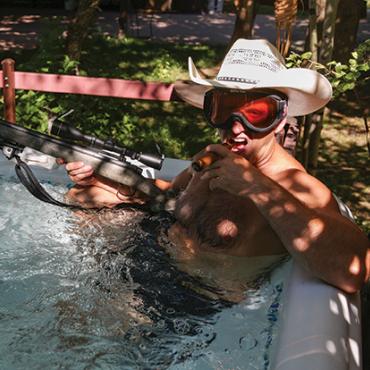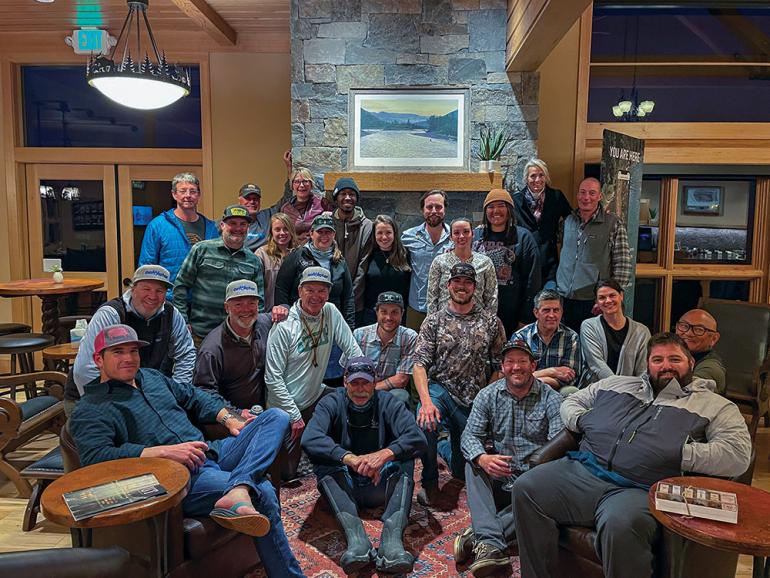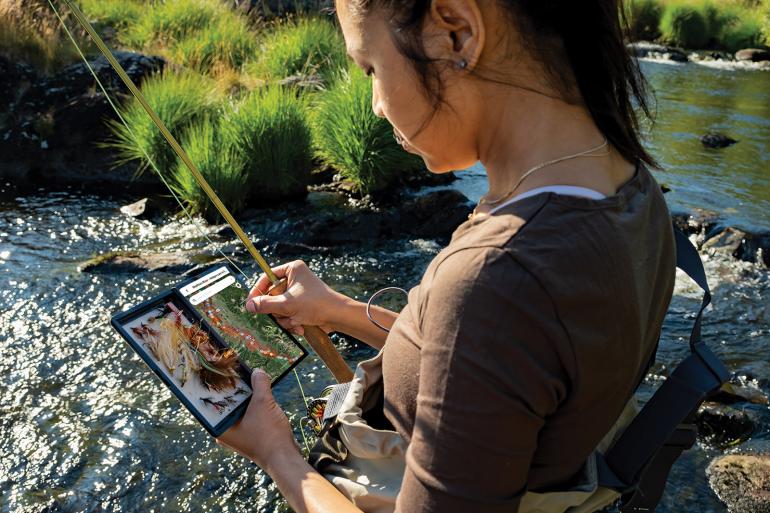iFish Pro
Talking technology at the Madison Valley Ranch.
“It’s strange,” says onWater app co-founder Scott Carver, addressing an audience of 25 avid anglers. “We used to go outside to get away from technology, but now we’re using it to enhance the outdoor experience.”
Strange indeed, and a difficult concept for me to accept—I still consider nature an escape from human contrivances. But the fact is, technology is here and it’s here to stay. More and more folks are bringing their phones along, and actually using them, to improve an outing. On hikes, it might be a wildflower-identification app; while biking, a trails program; and for fly fishing, software with streamflows, access points, weather reports, and river hazards. Even I, a resolute Luddite, use a digital mapping overlay when hunting—and, after ten years with it on my GPS, I can’t imagine going afield without it.
It should be noted that outdoor equipment has been high-tech for a long time. Take fly fishing, with its graphite and boron rods, machined-aluminum reels, and Gore-Tex waders. But physical equipment is a far cry from electronic communication networks—digitalia, as I like to call it. The former is static and finite, while the latter is dynamic, exhaustive, ubiquitous. It connects us to everyone else, everywhere else, across time and space—thus causing us to congregate, online or in person, in too many places, exceeding their social and environmental carrying capacity. It facilitates the unfortunate trend of “loving a place to death.”
Which is why, at a recent gathering on the banks of the Madison River, onWater—a start-up software company building a sophisticated fly-fishing app—facilitated conversations on how technology can be used to not just enhance the angling experience, but improve conditions across the board—including how to ease the increasing pressure on our most valuable recreational resources.
For onWater’s first annual Confluence conclave, a diverse group of folks converged on the Madison Valley Ranch, a sprawling fishing lodge adjacent to the Channels, the braided section of the Madison between the town of Ennis and Ennis Lake. Over the course of two days, participants put their heads together to brainstorm how best to approach the challenges facing fly fishing and its increasing popularity.
Not surprisingly, conservation and ethics often dominated the discussions, with many good ideas generated. The devil’s in the details, of course, and it’s a long road from idea to implementation; but it was generally agreed that digital-delivery could, by way of links and prompts, make it easier to contribute to conservation efforts, through donations, dissemination of important information, and participation in volunteer projects. Furthermore, alerts could notify anglers of off-limits areas, licensing requirements, and river closures (e.g., “hoot owl” restrictions). Quick access to proper catch-and-release techniques, conservation success stories on local waters, and promotions to improve education and advance stewardship… with modern technology, all of this could be in the palm of one’s hand.
Among the attendees were those who use angling as therapy, to help everyone from wounded warriors to cancer survivors. For them—and for the rest of us, to a lesser degree—fly fishing facilitates healing, primarily by way of quietude, solitude, and connection to nature. In contemporary parlance, it’s all about being present—ignoring distraction and living in the moment. How, then, to reconcile this with smartphones and apps, both of which tend to do the opposite?
The answer, I learned, while plucking a few hard-fighting rainbows from the Channels, is keeping technology in its proper place. You can’t be present on the stream while staring at your phone all day. You can, however, take a quick peek now and again—to read a fishing report, check the weather, or track your location and route, thus increasing safety, easing anxiety, and enhancing the overall experience—all while remaining firmly rooted in the knee-deep water of the Madison River.
To learn more, visit onwaterapp.com.













